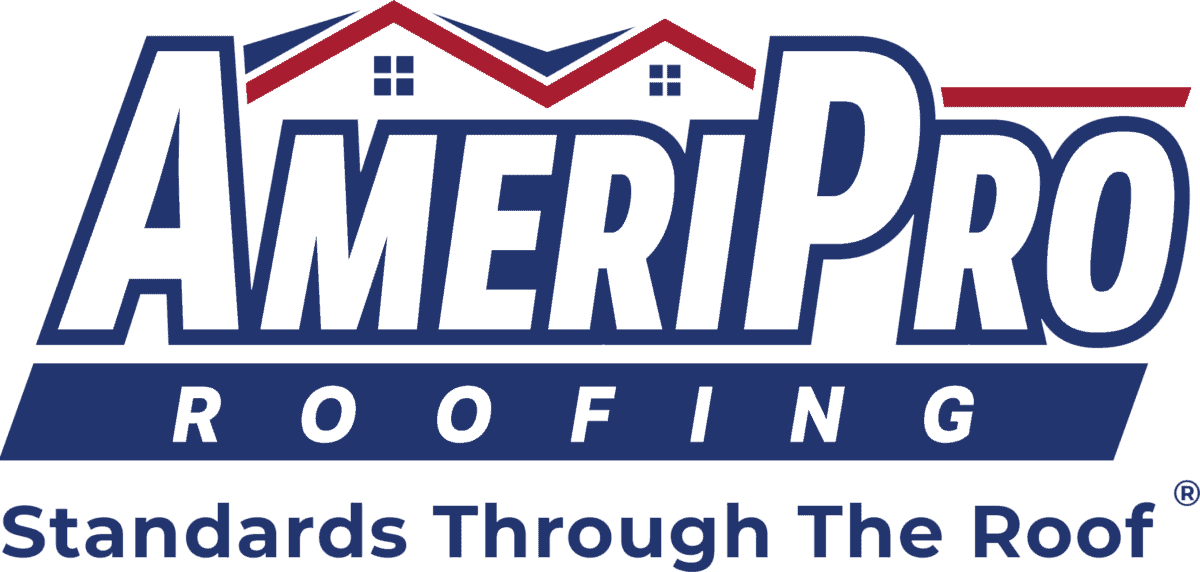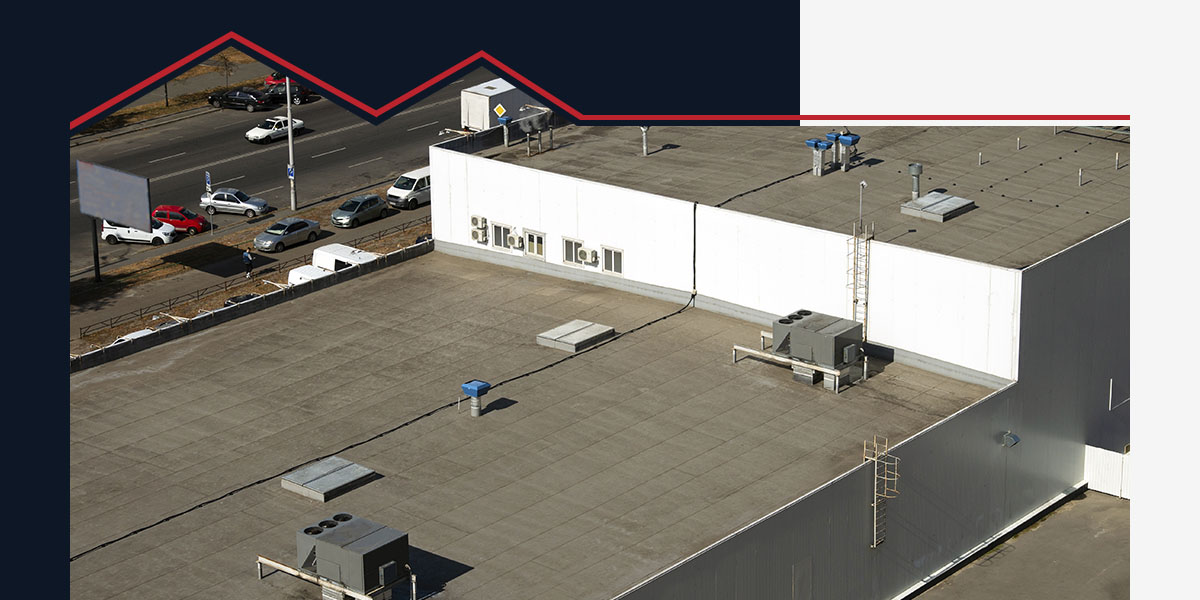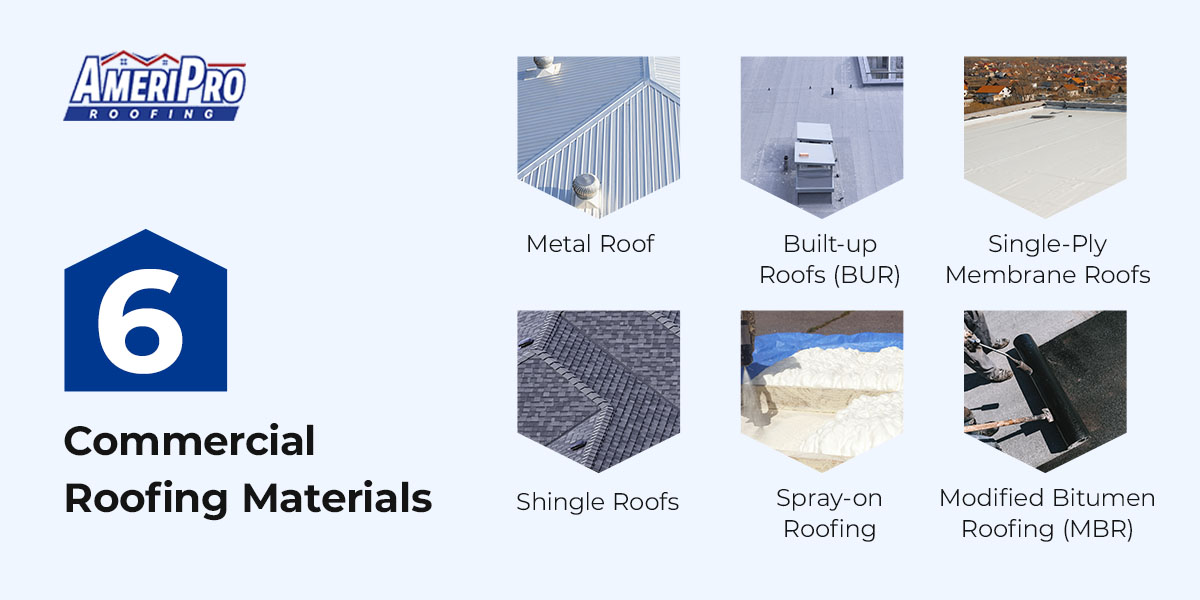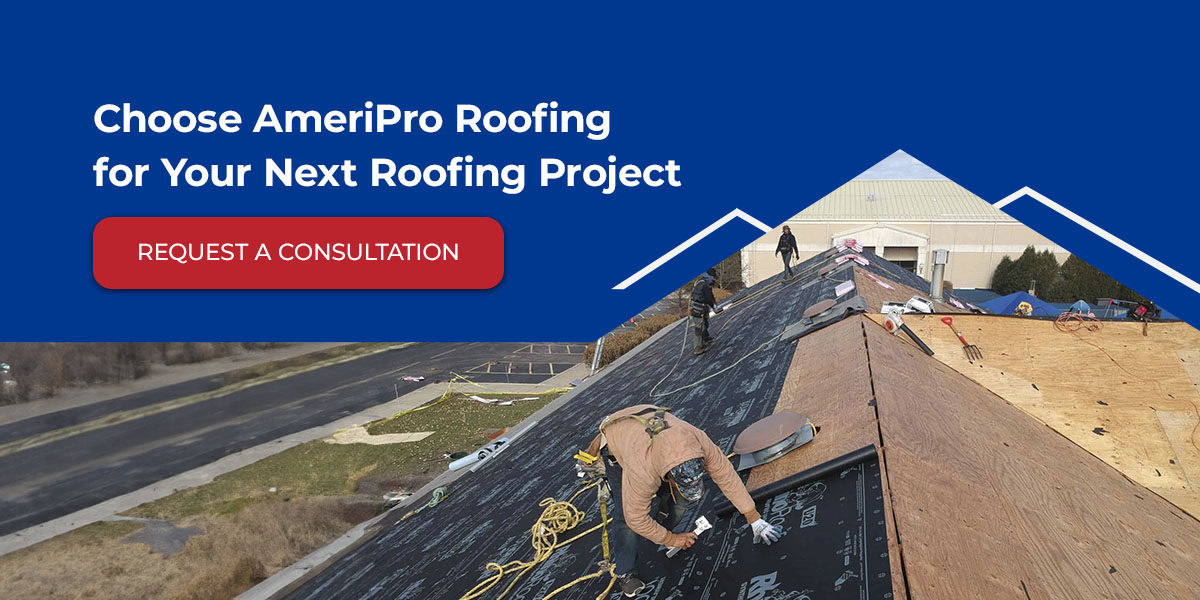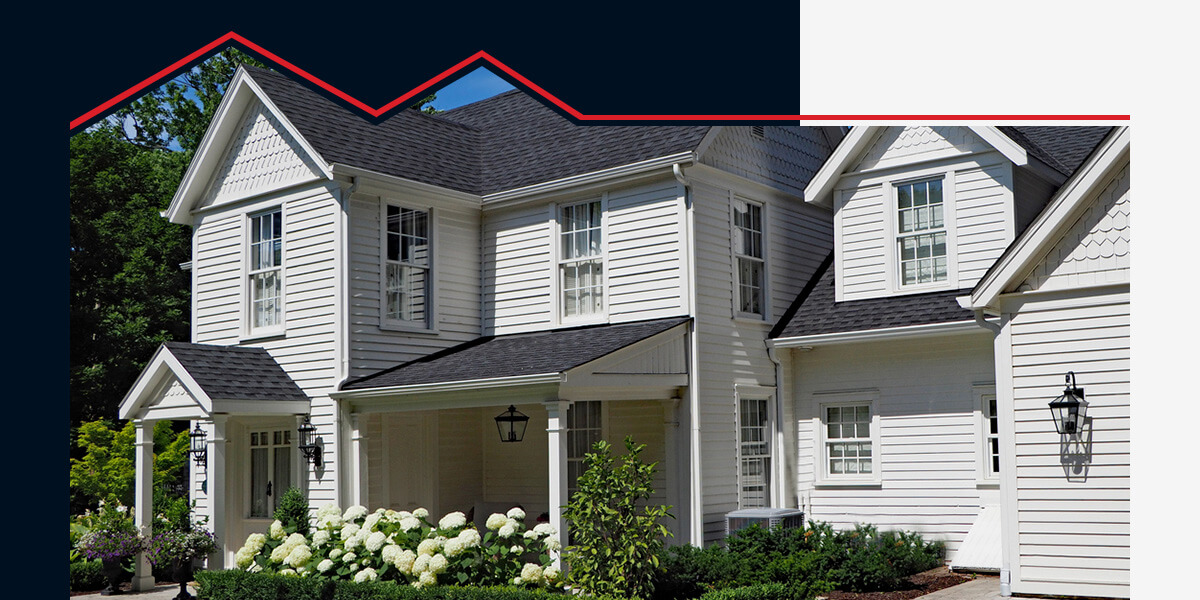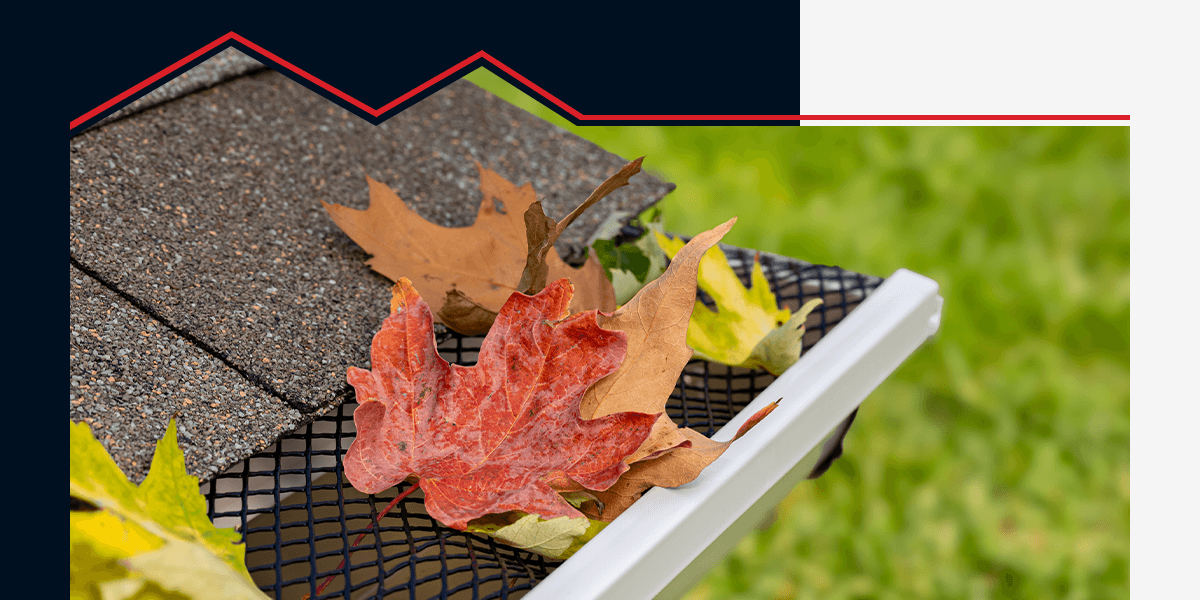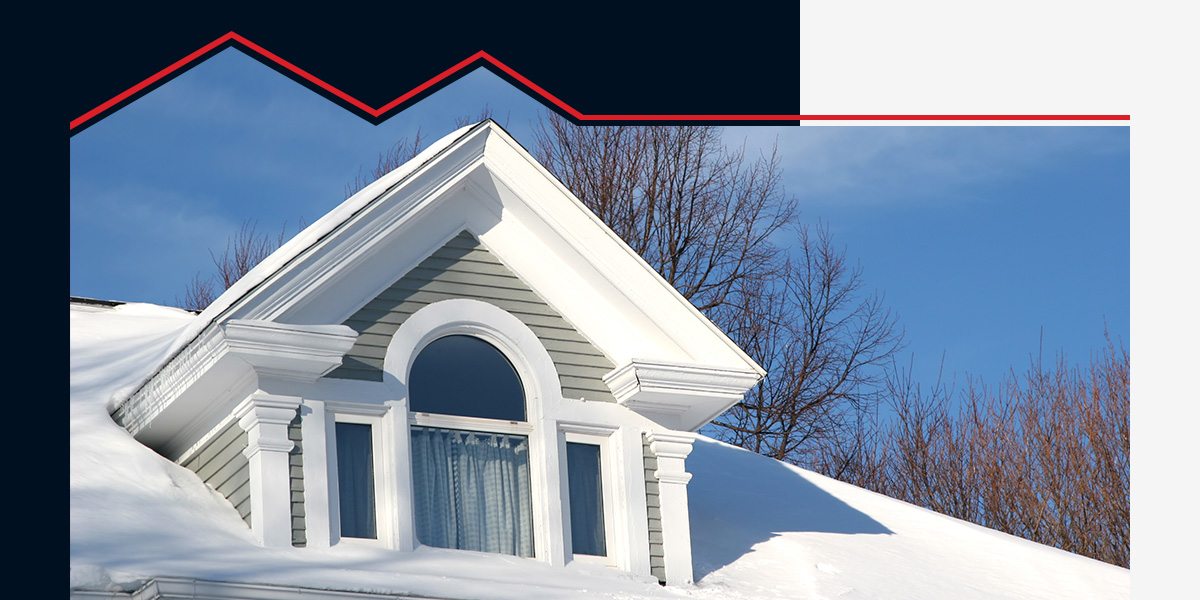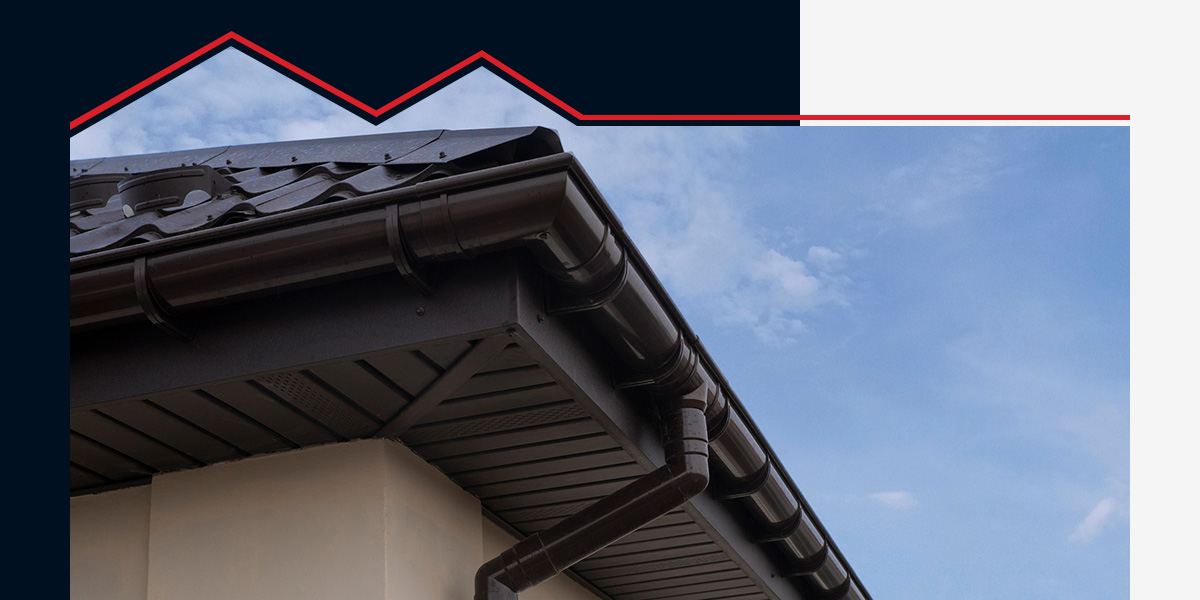Replacing the roof on your commercial building is an investment in your business. However, that decision comes with some questions. How do you know the best time to replace it? What’s the average cost, and which material should you choose?
Sorting through the many commercial roofing types can be overwhelming. Use this guide to find the best option and plan your next roofing replacement. With the right selection, you’ll be able to enjoy the many benefits of a new commercial roof.
Table of Contents
- When Should You Replace Your Commercial Roof
- 6 Commercial Roofing Materials
- How to Choose the Best Roofing Option for You
- Choose AmeriPro Roofing for Your Next Roofing Project
When Should You Replace Your Commercial Roof?
Depending on the type of roofing material you have, commercial roofs can last anywhere from 20 to over 100 years. However, you may need to replace your roof before its full service life is expended if you notice any of the following factors:
- Obvious damage like cracks, holes or blistering
- Signs of water leaks inside the building
- Increased energy bills with no other explanation
If there’s visible damage to the roof of your commercial building, you should repair it immediately. In cases with heavy damage, you may need to completely replace the roofing.
Sometimes, an aging roof can affect your commercial building’s energy bills. If the roof isn’t properly insulating your building, the HVAC system will have to work harder to keep internal temperatures regulated.
6 Commercial Roofing Materials
When you decide it’s time to replace your commercial roof, the first step is to choose the material you want for your new installation. Each kind of commercial roofing material has different pros and cons, and some handle harsh weather conditions better than others.
Consider these six common types of commercial roofing materials and what makes each unique:
Metal Roofs
Metal roofing is strong and durable. When applied with protective layers, it can last for decades. This kind of roofing is versatile and can work on buildings with different roof shapes ranging from flat roofs to steep slopes.
There are several different options for the type of metal you can choose, ranging from copper to galvanized steel. Your roofing company will be able to offer recommendations depending on your location and budget. Some types of metal roofing are more expensive than others.
The downside to metal roofing is that it can suffer corrosion if it experiences finish damage, which means you’ll need a roofing replacement sooner than usual. However, with proper installation and maintenance, a metal roof will yield a long-term return on investment.
Built-up Roofs (BUR)
If you live in an area with wide temperature fluctuations and need your roof to be walkable, built-up roofing may be the perfect solution for you. This type of commercial roofing consists of several layers of tar and gravel.
Once these layers harden, you can coat a BUR to reflect heat and improve your building’s energy efficiency. Because of their construction and materials, built-up roofs are cost-effective.
However, there are a few downsides to this kind of roofing. BURs typically last 20 years at most, even with proper maintenance. In addition, they don’t offer a lot of structural stability. You’ll need a strong building understructure to ensure workers can walk on the roof safely.
Single-Ply Membrane Roofs
In contrast to built-up roofs, this type of roofing is installed in a single layer. The two main types of single-ply roofing are thermoset membranes and thermoplastic membranes. Many business owners choose this kind of roofing because it’s flexible, weather-resistant and durable.
Thermoset membrane roofing is made with ethylene propylene diene monomer, or EPDM. It’s a synthetic rubber that can be rolled out and sealed to create a durable roof. It’s inexpensive and resists sun damage. EPDM is a good choice for low-slope roofs, but it’s not an ideal surface to walk on.
There are two common types of thermoplastic membranes — PVC and TPO. Polyvinyl chloride, or PVC, is a single-ply roofing material that’s technically made of three layers. It’s extremely durable, cost-effective and weldable, which makes it more versatile.
Thermoplastic polyolefin, or TPO, has similar properties to PVC roofing. It’s single-ply, can be welded and is resistant to damage from the sun and bacteria. When you choose a reputable provider, this type of roofing is cost-effective and can last for several decades.
Shingle Roofs
If your commercial building has a steep slope, shingles are a good choice. This kind of roofing comes in many different materials, including slate, asphalt, metal and ceramic options. If you choose high-quality materials, shingle roofs can be extremely durable and last for up to 50 years.
Shingle roofing is energy-efficient, affordable and fire-resistant. It’s also easy to repair. However, if you experience a lot of rain, you might want to avoid asphalt shingles, as they’re prone to moss in some environments.
Spray-on Roofing
Did you know you can spray roofing onto your commercial building? Spray polyurethane foam, or SPF, is a type of roofing material that workers spray onto your existing roof. The spray expands into foam and then hardens into a solid surface.
This type of roofing is reflective and insulating, so it can help to improve your building’s energy efficiency. It can last for decades if properly maintained and handles different weather conditions well. However, it can’t be applied during poor weather.
Modified Bitumen Roofing (MBR)
By contrast, a modified bitumen roofing system can be installed during warm or cold weather. This kind of roof is sometimes called a “torch-down” roof because of the way it’s usually applied. Because of the material and application process, it’s best for low-slope or flat roofs.
MBR is made of asphalt and polymers, which makes this roofing system strong and flexible. Although it can be more expensive to install, it improves insulation and can lead to reduced energy costs over time. It’s a good choice for a walkable roof because it’s difficult to penetrate.
How to Choose the Best Roofing Option for You
There are several factors to consider when replacing commercial roofing systems. Here are five questions you can ask to help make the best choice:
- What type of roofing slope does the building have?
- What weather conditions will it need to endure?
- What’s your budget range for a new roof?
- What goals do you have for a new roof?
- Do you have any material preferences, and why?
These questions will give you a set of parameters to help navigate the different options you could choose. Some types of commercial roofs are better for energy efficiency, others last a long time because of their material, and some roofing materials are more walkable than others.
Remember that price isn’t just the initial cost of a roof — maintenance, durability and energy efficiency can all impact the total cost of a roofing system. If you choose wisely, your new roof will be a high-quality investment with the potential to protect your facility for many years.
Choose AmeriPro Roofing for Your Next Roofing Project
AmeriPro Roofing has been providing commercial and residential property owners with roof restoration, replacement and other services for over 20 years. We offer customers a complimentary inspection and evaluation before recommending the best path forward.
At AmeriPro Roofing, we’ve completed over 150,000 projects and have partnered with leading manufacturers to offer premium quality shingles that will last for decades. We have locations in 14 states ranging from Ohio to Colorado. Contact us today for your complimentary roofing inspection!


